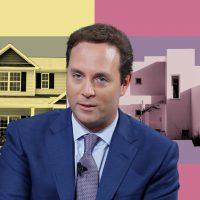 Spencer Rascoff wants to democratize second homes
Spencer Rascoff wants to democratize second homes
Trending
 Evictions surge at Hialeah’s luxury apartment projects Shoma Village, Pura Vida and Manor
Evictions surge at Hialeah’s luxury apartment projects Shoma Village, Pura Vida and Manor Lawmakers reach sweeping housing deal with “good cause eviction,” new 421a
Lawmakers reach sweeping housing deal with “good cause eviction,” new 421a Charles Schwab slashing Chicago office space with big subleases
Charles Schwab slashing Chicago office space with big subleases Tony Park and Elad Dror take a gamble on Koreatown office-to-resi conversion
Tony Park and Elad Dror take a gamble on Koreatown office-to-resi conversionMortgage rates on second homes rise as Fannie, Freddie pull back
Only 7% of loans they buy can be tied to weekend or investment properties

Purchasing a second home during the pandemic may have seemed like a good idea with historically cheap mortgages available, but new changes are driving rates up for some buyers.
Fannie Mae and Freddie Mac have capped how many second-home loans it purchases, depriving many lenders of the government backstop they had been relying on to offer interest rates in the 3 percent range, the Wall Street Journal reported.
Now, no more than 7 percent of the property loans that lenders sell to either of the mortgage giants can be tied to second homes or investment properties, the publication reported. The cap is based on the overall dollar volume of loans they purchase.
Loans that cannot be sold to Fannie and Freddie have higher rates to compensate for the risk of holding loans on which borrowers might default.
Demand for second homes surged during the pandemic, thanks to the option to work from anywhere — be it a Hamptons cottage, Vermont farmhouse or Malibu beach home — and urban shutdowns. Mortgage applications for second homes were up 84 percent year-over-year in January, according to Redfin — more than double the increase for primary homes.
Read more
 Spencer Rascoff wants to democratize second homes
Spencer Rascoff wants to democratize second homes
 Spencer Rascoff’s Pacaso is worth $1B
Spencer Rascoff’s Pacaso is worth $1B
Second homes and investment properties don’t align with Fannie Mae and Freddie Mac’s missions to make home ownership affordable, officials at the Federal Housing Financing Agency told the publication. The agency, which oversees the two corporations, negotiated the changes with the Treasury Department.
Freddie Mac is already in compliance with the new limits. Fannie Mae has asked lenders to comply by June 1, the Journal reported.
[WSJ] — Cordilia James
